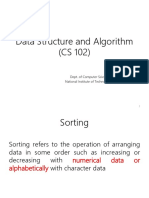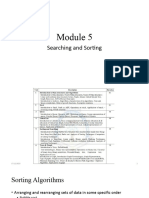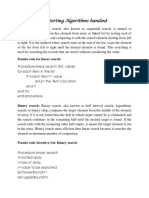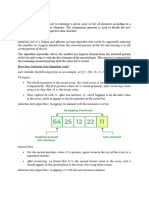0% found this document useful (0 votes)
26 views37 pagesInsertion Sort
The document provides an overview of sorting algorithms, specifically focusing on Insertion Sort, Bubble Sort, and Selection Sort. It explains the basic concepts, algorithms, advantages, and disadvantages of each sorting technique, highlighting their time complexities and suitability for different data sizes. Additionally, it includes pseudocode and practice examples for better understanding.
Uploaded by
rh132004Copyright
© © All Rights Reserved
We take content rights seriously. If you suspect this is your content, claim it here.
Available Formats
Download as PPTX, PDF, TXT or read online on Scribd
0% found this document useful (0 votes)
26 views37 pagesInsertion Sort
The document provides an overview of sorting algorithms, specifically focusing on Insertion Sort, Bubble Sort, and Selection Sort. It explains the basic concepts, algorithms, advantages, and disadvantages of each sorting technique, highlighting their time complexities and suitability for different data sizes. Additionally, it includes pseudocode and practice examples for better understanding.
Uploaded by
rh132004Copyright
© © All Rights Reserved
We take content rights seriously. If you suspect this is your content, claim it here.
Available Formats
Download as PPTX, PDF, TXT or read online on Scribd
/ 37























































































